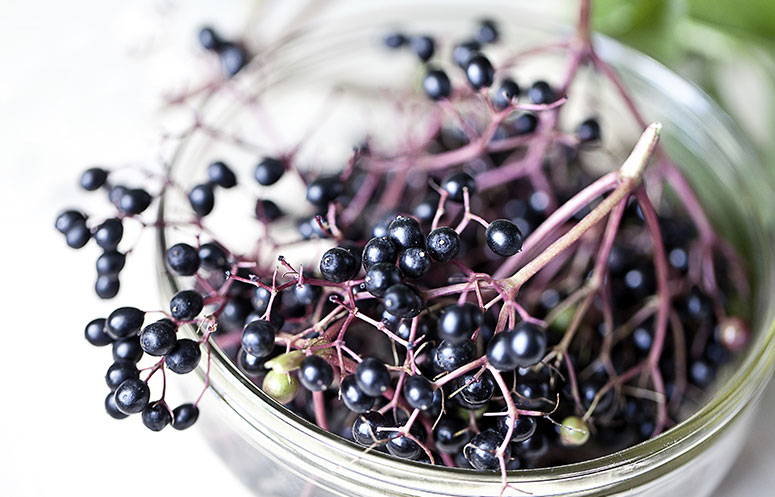
The elderberry (or Sambucus) plant is one of the most common types of bush in Central Europe. The robust, undemanding plants are also found in other regions of Europe as well as western Siberia, northern India, the Caucasus, Asia Minor and northern Africa.
Description
The elderberry plant is a species of the genus Sambucus. It grows in the wild, but is also cultivated – in increasing numbers since the mid-1980s. The elderberry bush, whose white flowers bloom in June and July, can grow as tall as seven metres. The small, black elderberries are harvested from late August to early September.
Distinctive features
Elderberry juice contains large quantities of vitamin C, and is regarded as a household remedy for colds. In former times, the elderberry was a focal point of mystical folk tales. The Sambucus plant in the household garden assumed the status of a tree of life and a means of defence against black magic. It was also said to protect homes against fire and lightning. People were convinced that the bushes were inhabited by benevolent household spirits, a belief that led to the customer of doffing one’s hat when passing an elderberry bush.
Fruit
The black berries (they are actually stone fruits) measuring roughly six millimetres in diameter are full of burgundy-red juice. Each blossom forms three seeds. As the fruits ripen, the stalks to which they are attached also take on a reddish colour.
Flavour
Eaten raw, elderberries can cause indigestion in children and people with sensitive gastro-intestinal tracts. They lose their “poisonous” properties when heated or cooked, however. They are processed primarily in the production of jelly, puree, juice, liqueur or wine. The fruit juice is highly aromatic, yet low in acid, slightly tart and hardly sweet at all. Due to these qualities, it is often mixed with apple juice or other sweet fruit juices.


… that elderberries contain many antioxidants and are the source of a dark red dye?





